
City’s History in Brief in Buenos Aires, Buenos Aires, Ciudad Autónoma de, Argentina
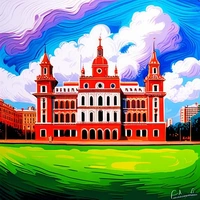
1. Casa Rosada
This iconic pink building serves as the Argentine President’s office and represents the political heart of Buenos Aires. Visitors can take guided tours to explore its rich history and architecture. It’s a must-visit to understand the political evolution of Argentina.
- Tour Availability: Guided tours may require advance booking.
- Historical Significance: Serves as the center of political power.
- Photogenic Spot: Notable for its unique pink facade.
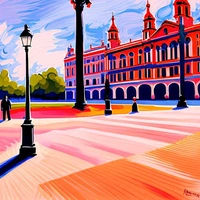
2. Plaza de Mayo
Known as the birthplace of Buenos Aires, this square has been the stage for crucial political events. It's where the city was founded and has witnessed numerous protests and celebrations. Visit for a snapshot of Argentina's political history.
- Central Location: Easily accessible within the city.
- Historical Monuments: Features landmarks like the May Pyramid.
- Current Events: Frequently hosts political gatherings.
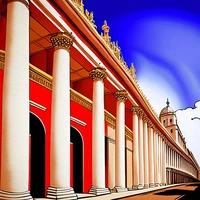
3. Teatro Colón
Opened in 1908, this world-renowned opera house is famous for its stunning architecture and acoustics. A tour provides insight into its cultural significance and historical performances. Experience its grandeur and consider attending a performance if possible.
- Acoustic Excellence: Renowned for its superb sound quality.
- Architectural Marvel: Features elegant design and opulent interiors.
- Cultural Insight: Offers scheduled performances and tours.
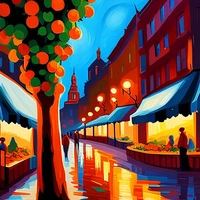
4. Manzana de las Luces
This historic block hosts several of the city’s oldest buildings and tunnels from the colonial period. It offers an insight into Buenos Aires' colonial heritage with educational exhibits and tours. Explore to delve into the city’s early development.
- Guided Tours: Available to explore underground tunnels.
- Educational Exhibits: Houses various historical artifacts.
- Colonial Architecture: Features well-preserved colonial structures.
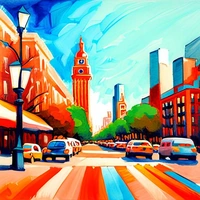
5. Avenida de Mayo
A historical avenue lined with architectural marvels that connect the presidential palace with the national congress. The avenue exemplifies the European influence on Buenos Aires' architecture and urban planning. Wander to admire its historic charm and landmarks.
- Architectural Variety: Known for diverse architectural styles.
- Historical Landmarks: Includes Palacio Barolo and Café Tortoni.
- Walkability: A pleasant area for a historic walk.
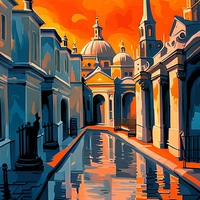
6. Recoleta Cemetery
An elaborate cemetery where many of Argentina's notable figures are buried, including Eva Perón. It’s renowned for its stunning mausoleums and sculptures, making it a unique open-air museum. Visit for a serene and reflective experience of Argentina’s history.
- Historical Figures: Final resting place of important personalities.
- Artistic Sculptures: Features intricate mausoleum designs.
- Guided Tours: Available to provide historical context.
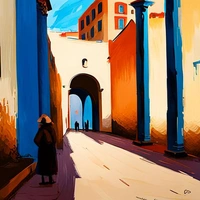
7. Cabildo
This colonial-era government building played a critical role during the May Revolution. It has been converted into a museum, allowing visitors to learn about the early days of Argentine independence. It's a key location for understanding national history.
- Museum Exhibits: Offers insight into colonial governance.
- Historical Events: Significant to the revolutionary period.
- Central Location: Situated in the heart of the city.
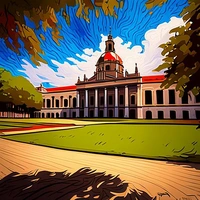
8. Museo Histórico Nacional
This museum houses artifacts and exhibits that document Argentina's journey from colonial times to independence. It's perfect for those interested in comprehensive historical context. Explore to gain deep insights into Argentina’s past.
- Extensive Collection: Features artifacts spanning several centuries.
- Thematic Exhibits: Focus on different historical periods.
- Informative Displays: Provides educational narratives.
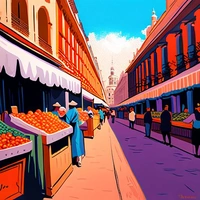
9. San Telmo Market
While primarily known for its vibrant market atmosphere, San Telmo is one of the oldest neighborhoods, displaying colonial architecture. Walking through offers a view into Buenos Aires' early community life. Experience the blend of history, culture, and commerce.
- Colonial Architecture: Observe buildings from the colonial era.
- Cultural Vibe: Experience traditional market dynamics.
- Vintage Shops: Offers a mix of antiques and local crafts.
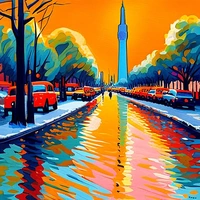
10. Obelisco de Buenos Aires
Located in the center of Avenida 9 de Julio, this iconic monument marks important moments in the city’s history. It’s not only a symbol of the city but also a popular meeting point. Visit for its symbolic value and panoramic views.
- Monumental Symbol: Represents Buenos Aires' character.
- Accessibility: Centrally located at a major intersection.
- Photogenic Landmark: Provides excellent photo opportunities.
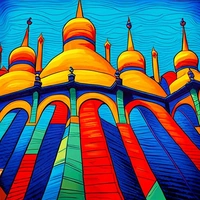
11. Museo del Bicentenario
Nestled beside the Casa Rosada, this museum highlights Argentine history from the 1810 revolution to the present day. It showcases significant events and personalities that shaped the nation. Visit for an educational and engaging experience.
- Modern Exhibits: Features interactive displays.
- Detailed Narratives: Provides a comprehensive historical timeline.
- Cultural Context: Offers insight into Argentina’s evolution.
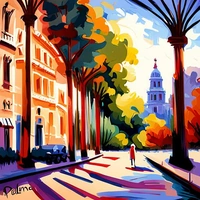
12. Palermo's Parks
This area of expansive parks was once home to historical events such as the formation of important botanical and aviation achievements in Buenos Aires. It showcases the city’s commitment to green spaces and recreational culture. Explore to enjoy nature with a dash of history.
- Historical Events: Site of early 20th-century advancements.
- Recreational Areas: Perfect for leisurely activities.
- Botanical Diversity: Features diverse plant species.
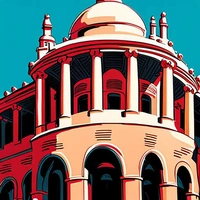
13. Museo de Arte Hispanoamericano Isaac Fernández Blanco
The museum houses a collection focusing on Spanish-American art that traces cultural exchanges in Buenos Aires. Located in a historic mansion, it offers insights into the city’s colonial artistic influences. Visit for a unique look at historical art forms.
- Colonial Art: Highlights Spanish colonial heritage.
- Architectural Heritage: Set in a historic building.
- Diverse Collection: Includes paintings, silverware, and textiles.
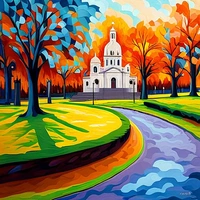
14. Cementerio de la Chacarita
As the largest cemetery in Buenos Aires, it provides a look into the city’s social history, especially through its grand monuments dedicated to famous figures. It offers a less-touristed alternative to Recoleta with equally rich stories. Explore for a tranquil historical walk.
- Vast Grounds: Extensive area for exploring various sections.
- Historical Burials: Home to many historical figures.
- Scenic Pathways: Offers peaceful walking routes.

15. Basilica Nuestra Señora del Pilar
This 18th-century church is one of the oldest in Buenos Aires, showcasing baroque architecture unique to the era. It played a significant role in the city's religious history and ongoing cultural traditions. Visit for serene reflection within historical walls.
- Architectural Beauty: Exemplifies baroque style.
- Historical Significance: Integral to local religious heritage.
- Spiritual Atmosphere: Offers a quiet retreat in a busy city.
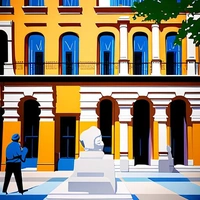
16. Museo Evita
Situated in a building once belonging to the Eva Perón Foundation, this museum chronicles the life and legacy of Eva Perón. Through personal items and interactive exhibits, it offers deep insight into her impact on Argentine culture and politics. Visit to understand an iconic historical figure's influence.
- Personal Artifacts: Displays items related to Eva Perón.
- Cultural Influence: Highlights her role in shaping Argentina.
- Informative Exhibits: Features multimedia displays.
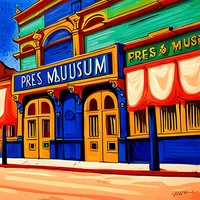
17. The Press Law Museum
This lesser-known museum is dedicated to the history of media and press freedom in Buenos Aires. Through its exhibits, it explores the evolution of journalism and its role in Argentine politics. Visit for a unique perspective on freedom of expression.
- Media History: Chronicles journalism's evolution.
- Interactive Displays: Offers engaging educational content.
- Importance of Free Press: Highlights journalistic challenges.
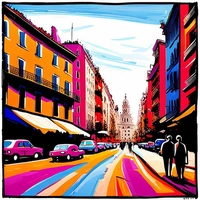
18. Palermo Chico
This exclusive neighborhood was designed in the early 20th century, reflecting the city’s expansion and urban development. It features grand mansions and elegant tree-lined streets, hinting at early European influences. Explore to observe architectural transition phases.
- Historical Development: Showcases early 20th-century planning.
- Architectural Styles: Known for opulent residential buildings.
- Urban Planning: Represents historical city expansion.
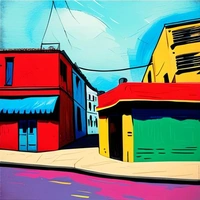
19. La Boca
Famous for its colorful houses, this neighborhood tells the story of Italian immigration in Buenos Aires. Its vibrant streets and cultural expressions reflect the immigrant contributions to the city’s history. Visit for a lively mix of history, art, and culture.
- Immigrant Influence: Highlights Italian cultural impacts.
- Artistic Vibe: Known for vibrant street art.
- Cultural Significance: Features tango history and performances.
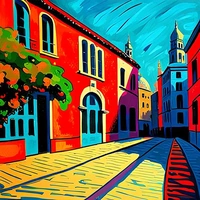
20. Jewish Museum of Buenos Aires
Located in the once thriving Jewish quarter, this museum highlights the history and contributions of the Jewish community in Buenos Aires. It provides context on their cultural, social, and economic influences. Visit for a comprehensive understanding of a key community’s history.
- Cultural Heritage: Focuses on Jewish contributions.
- Historical Exhibits: Showcases community achievements.
- Social Dynamics: Highlights integration and influence.
